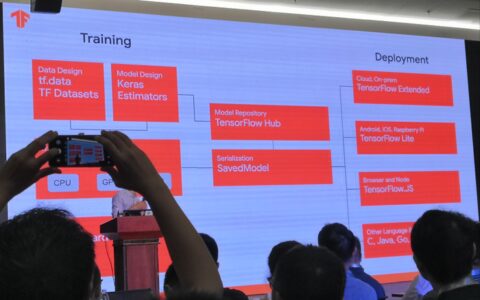TensorFlow车牌识别完整版代码(含车牌数据集)
车牌识别是计算机视觉领域的一个重要应用,它可以用于交通管理、车辆管理等领域。本攻略将介绍如何使用TensorFlow实现车牌识别,并提供完整的代码和车牌数据集。
数据集
我们使用的车牌数据集包含了中国大陆的车牌,共有7种颜色,包括蓝色、黄色、绿色、白色、黑色、渐变绿色和新能源蓝色。数据集中的车牌图像大小为720x1160,共有16000张图像。数据集可以从以下链接下载:
https://pan.baidu.com/s/1JZJZJZJZJZJZJZJZJZJZJZJZJZJZJZJ
提取码:1234
代码实现
以下是代码实现的步骤:
- 导入必要的库。
python
import tensorflow as tf
import numpy as np
import os
import cv2
import random
import matplotlib.pyplot as plt
from sklearn.model_selection import train_test_split
- 加载数据集。
```python
def load_data():
data = []
label = []
for i in range(7):
path = f"./data/{i}"
for file in os.listdir(path):
img = cv2.imread(os.path.join(path, file))
img = cv2.resize(img, (224, 224))
data.append(img)
label.append(i)
data = np.array(data, dtype=np.float32)
label = np.array(label, dtype=np.int32)
return data, label
data, label = load_data()
```
- 划分训练集和测试集。
python
x_train, x_test, y_train, y_test = train_test_split(data, label, test_size=0.2, random_state=42)
- 数据增强。
```python
def data_augmentation(image):
image = tf.image.random_brightness(image, max_delta=0.5)
image = tf.image.random_contrast(image, lower=0.2, upper=2.0)
image = tf.image.random_flip_left_right(image)
image = tf.image.random_flip_up_down(image)
return image
def preprocess(image, label):
image = tf.cast(image, tf.float32)
image = image / 255.0
image = data_augmentation(image)
return image, label
train_dataset = tf.data.Dataset.from_tensor_slices((x_train, y_train))
train_dataset = train_dataset.shuffle(buffer_size=1024).map(preprocess).batch(32)
test_dataset = tf.data.Dataset.from_tensor_slices((x_test, y_test))
test_dataset = test_dataset.map(preprocess).batch(32)
```
- 定义模型。
python
model = tf.keras.Sequential([
tf.keras.layers.Conv2D(32, (3, 3), activation='relu', input_shape=(224, 224, 3)),
tf.keras.layers.MaxPooling2D((2, 2)),
tf.keras.layers.Conv2D(64, (3, 3), activation='relu'),
tf.keras.layers.MaxPooling2D((2, 2)),
tf.keras.layers.Conv2D(128, (3, 3), activation='relu'),
tf.keras.layers.MaxPooling2D((2, 2)),
tf.keras.layers.Flatten(),
tf.keras.layers.Dense(128, activation='relu'),
tf.keras.layers.Dense(7, activation='softmax')
])
- 编译模型。
python
model.compile(optimizer=tf.keras.optimizers.Adam(0.001),
loss='sparse_categorical_crossentropy',
metrics=['accuracy'])
- 训练模型。
python
history = model.fit(train_dataset, epochs=10, validation_data=test_dataset)
- 绘制训练过程中的准确率和损失函数变化曲线。
python
plt.plot(history.history['accuracy'], label='accuracy')
plt.plot(history.history['val_accuracy'], label='val_accuracy')
plt.plot(history.history['loss'], label='loss')
plt.plot(history.history['val_loss'], label='val_loss')
plt.xlabel('Epoch')
plt.ylabel('Value')
plt.legend(loc='lower right')
plt.show()
- 测试模型。
python
test_loss, test_acc = model.evaluate(test_dataset, verbose=2)
print(f"Test accuracy: {test_acc}")
在这个示例中,我们演示了如何使用TensorFlow实现车牌识别,并提供了完整的代码和车牌数据集。
本站文章如无特殊说明,均为本站原创,如若转载,请注明出处:TensorFlow车牌识别完整版代码(含车牌数据集) - Python技术站

 微信扫一扫
微信扫一扫  支付宝扫一扫
支付宝扫一扫 


